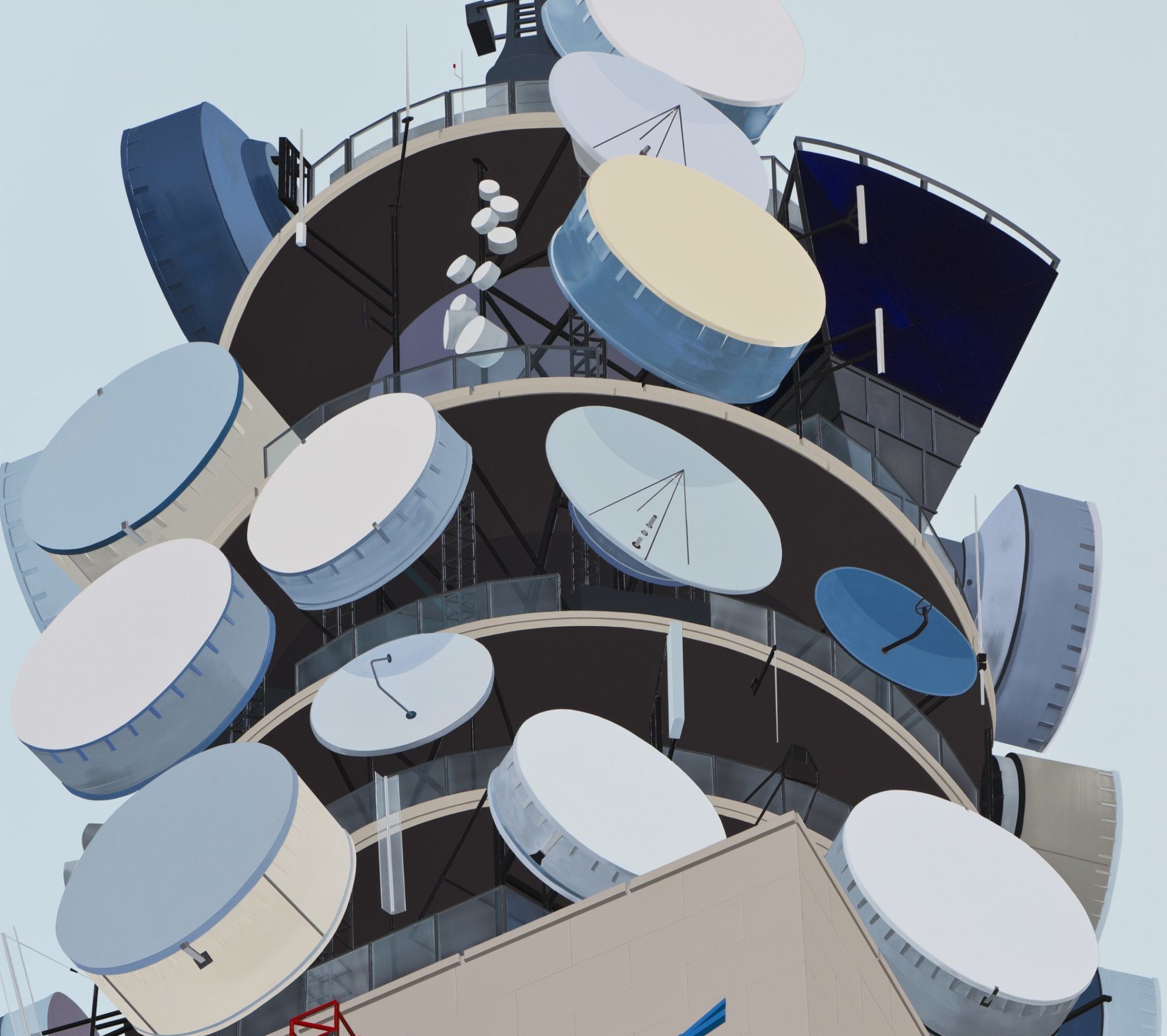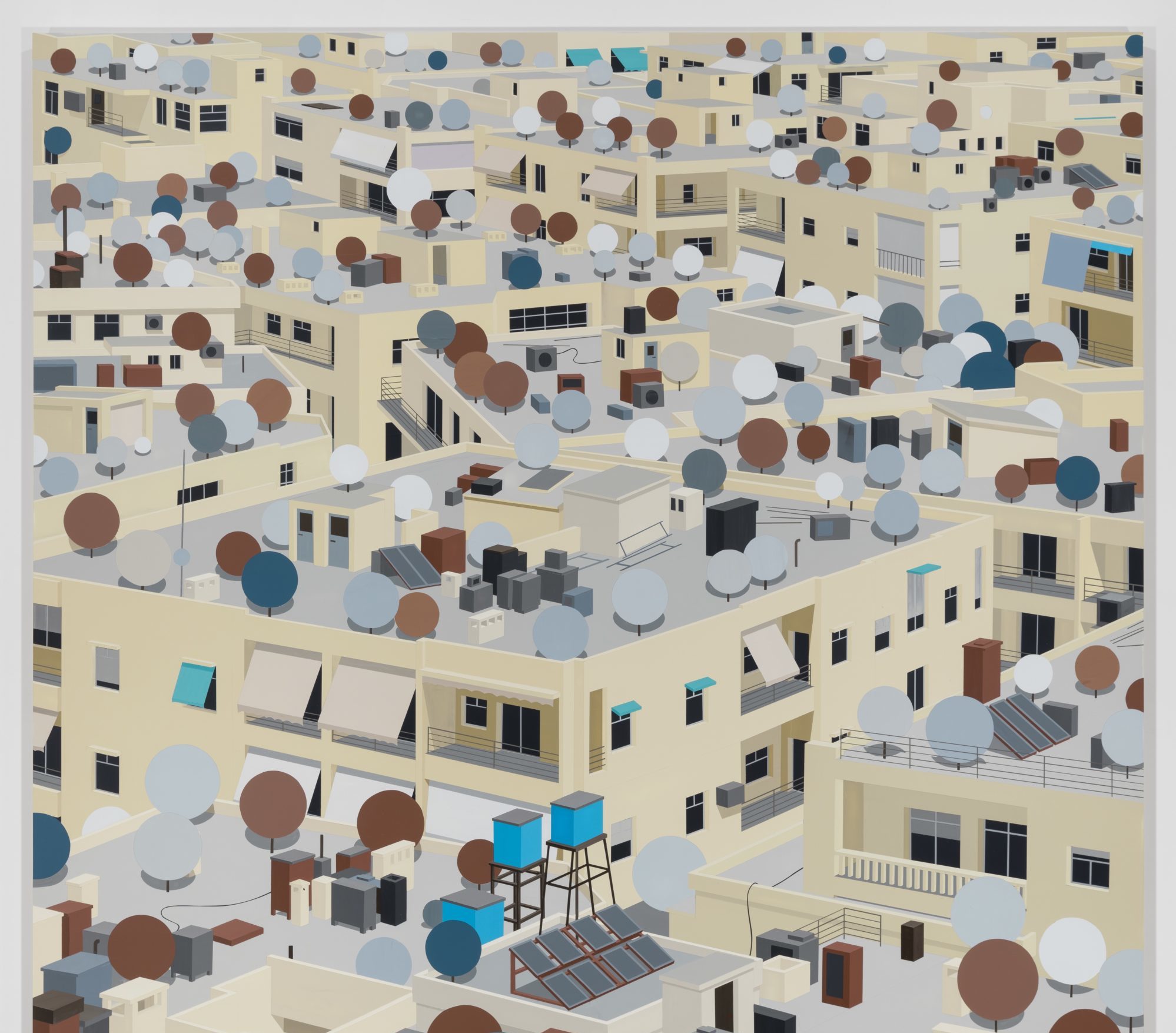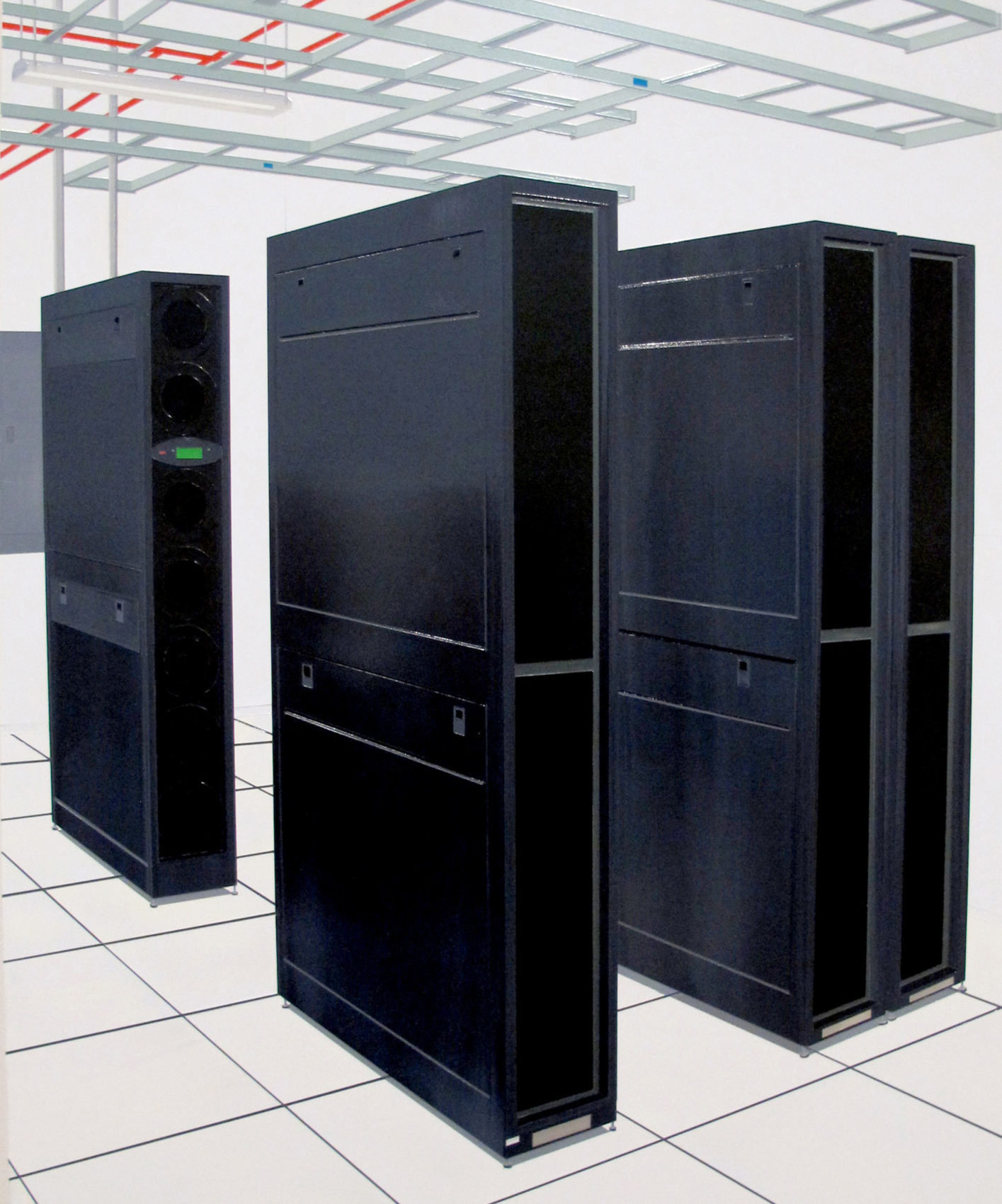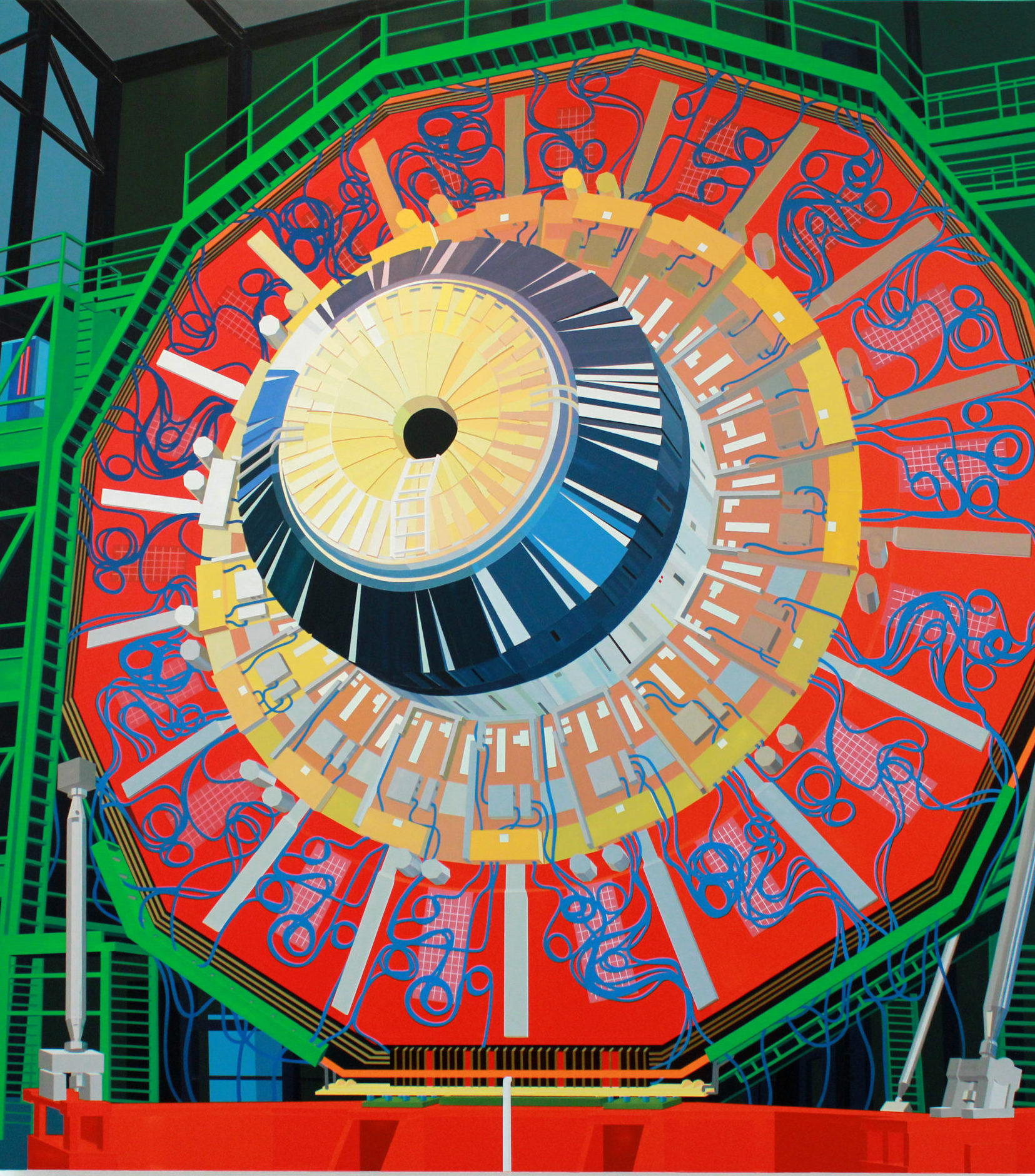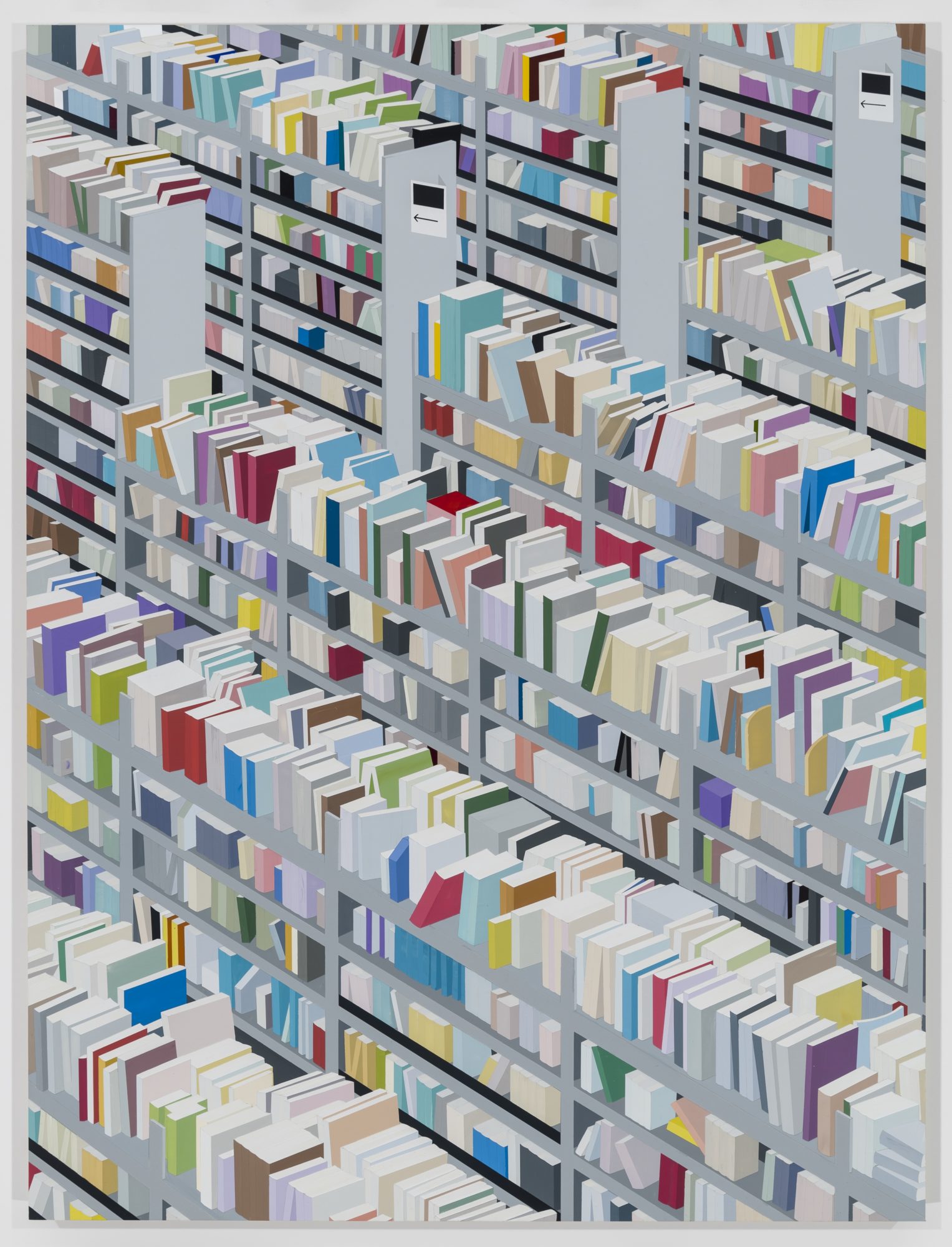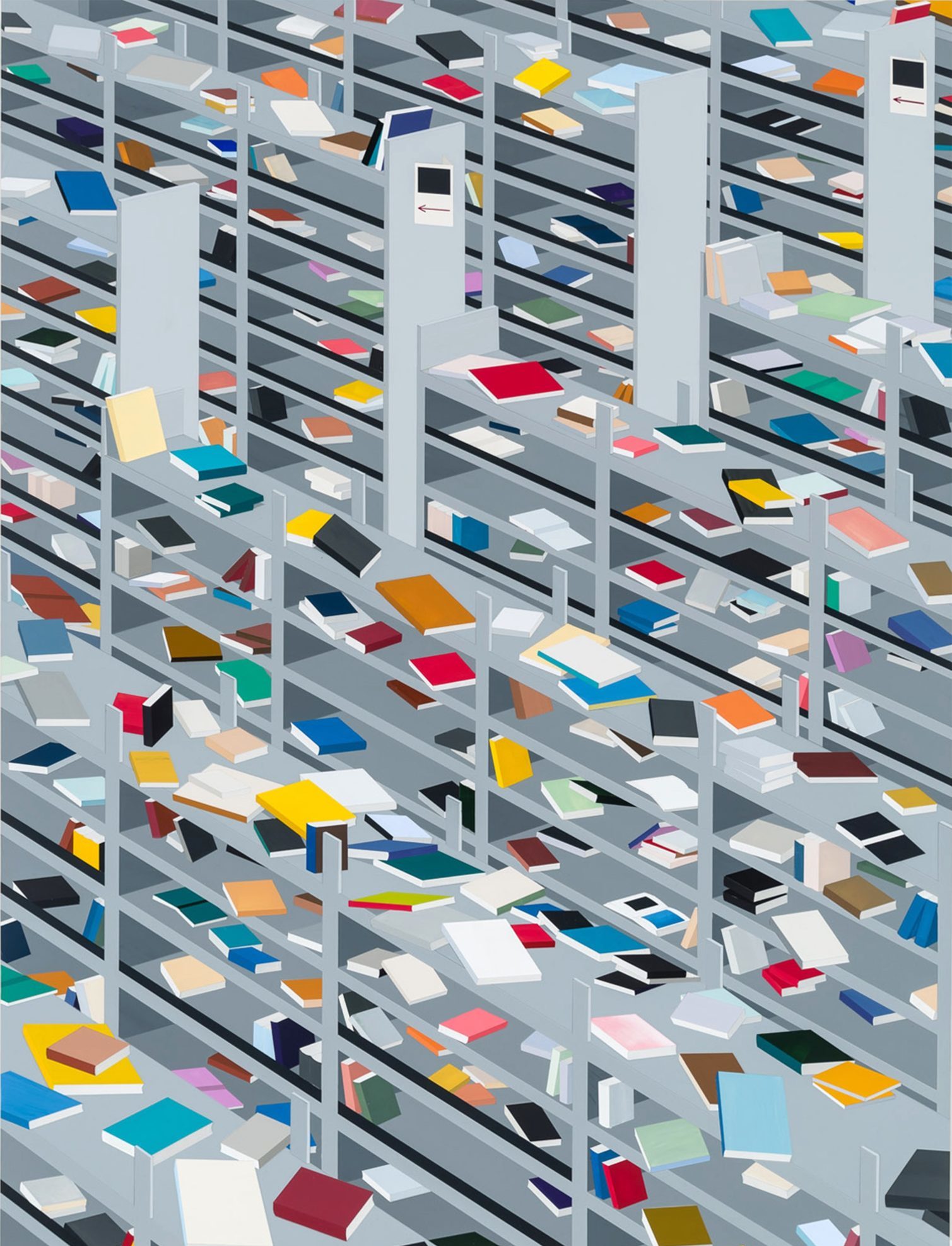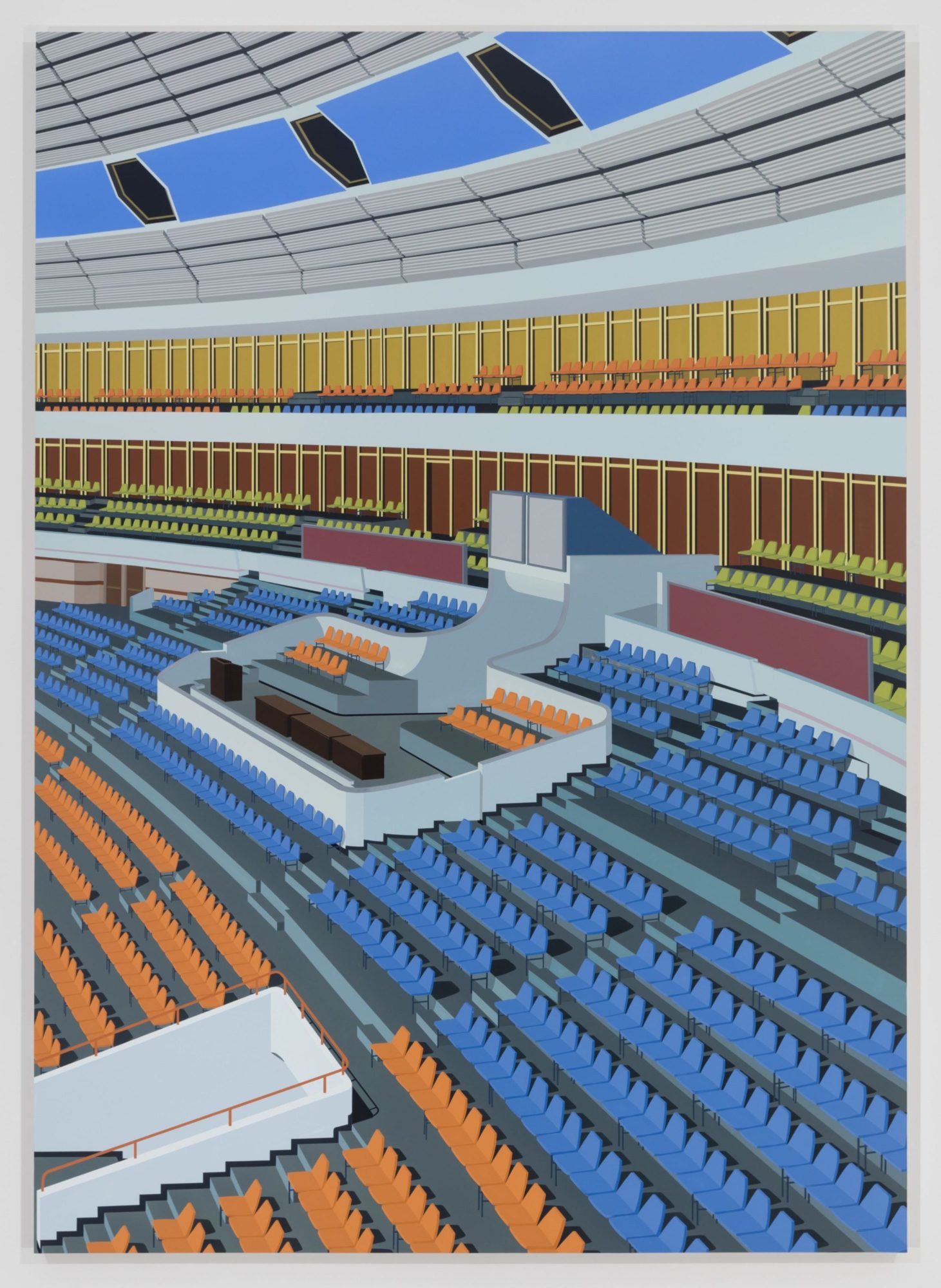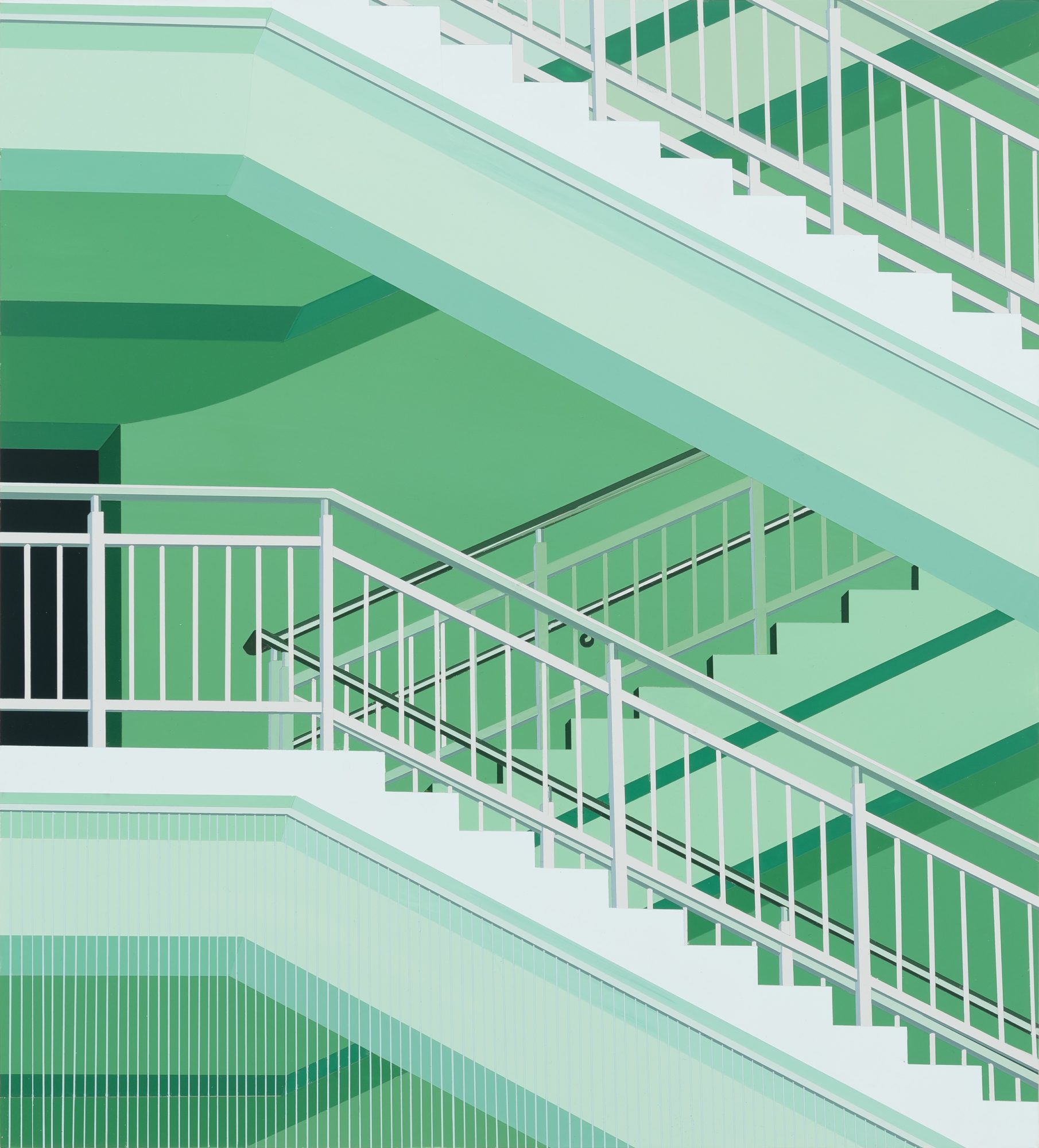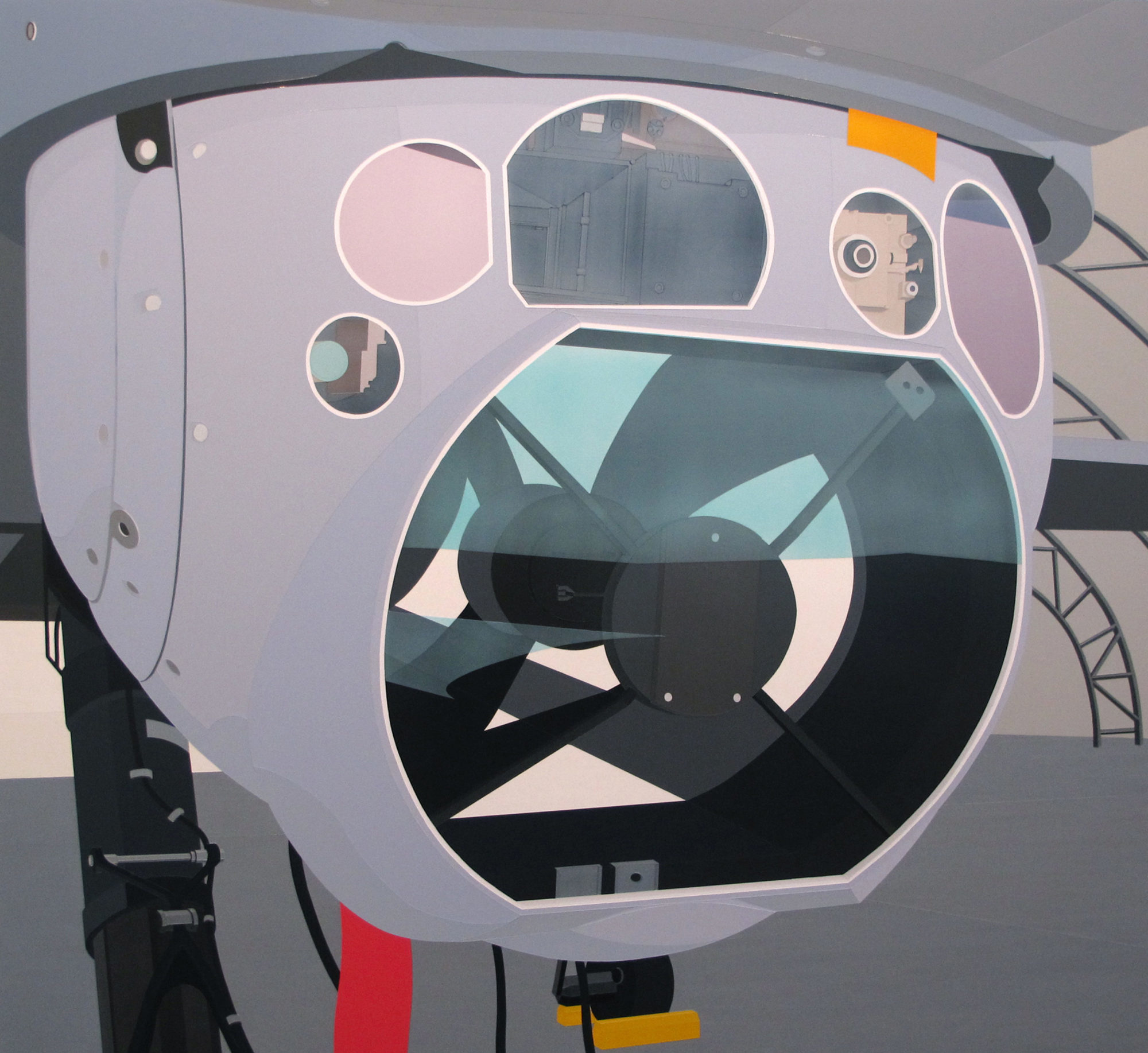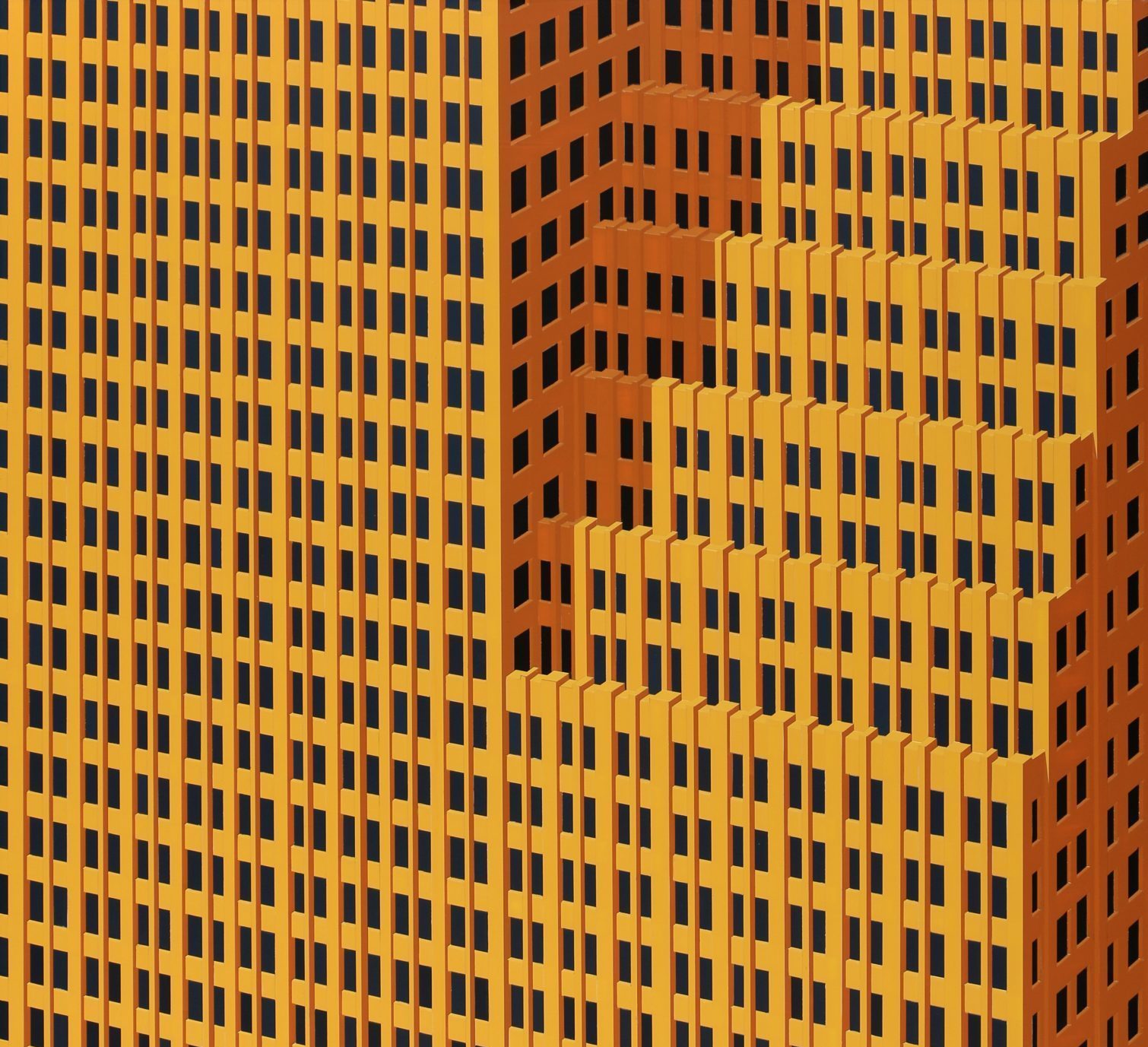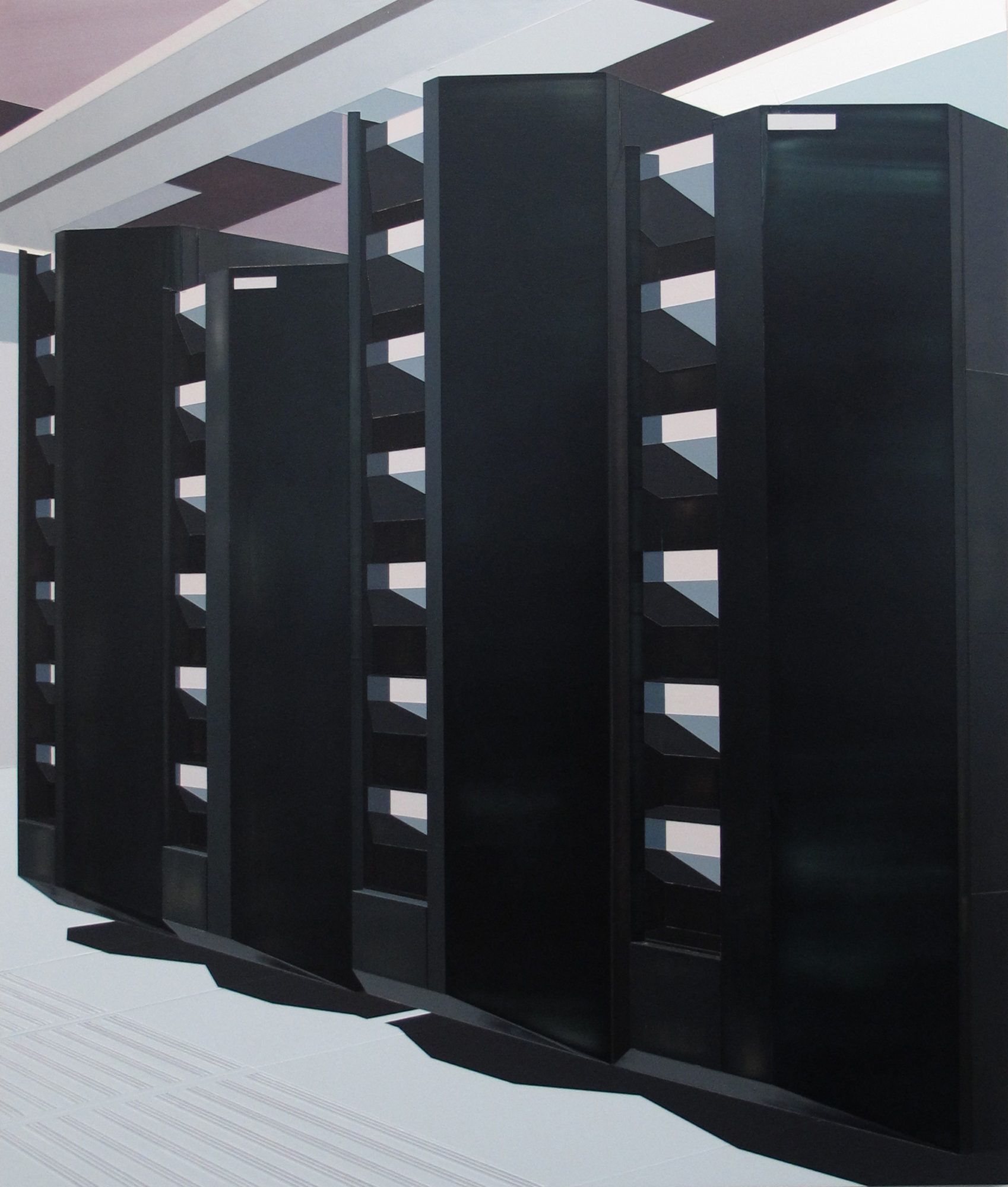Daniel Rich: Energy Structures
Beijing, 2014. Acrylic on Dibond, 78 x 5922.
Share:
I am interested in intersections between technology and architecture, and the impact of communications media on society, culture, and historical events. I explore these intersections through contexts such as WikiLeaks, Edward Snowden, instances of hacking, digital warfare, software glitches at Nasdaq, the role of social media in recent revolutions and wars in the Middle East, and the fragility of the systems on which we depend. The collection, dissemination, and control of information are recurring subjects in my work, as are ideological mobilizations of space, infrastructure, and architecture.
BT Tower, Birmingham, UK, 2010, acrylic and enamel on Dibond, 54 x 57 inches
Television towers were constructed during the post–World War II era, and those that remain now stand as contemporary ruins of an obsolete technology. The BT Tower in Birmingham, UK, was erected in the 1960s. Although it houses smaller, still-functional aerial satellite dishes, it is primarily a relic to obsolescence that serves as a local landmark.
Aleppo, March 15th, 2011, 2018, acrylic on Dibond, 39 × 39 inches
This painting is based on a photograph, of a residential neighborhood in Aleppo, Syria, shot before the Syrian Civil War. The date in the title refers to the day the war in Syria officially started. This painting is about the memory of a city—the satellite dishes are, in a sense, symbolic of past, destroyed lives—but also serve as reminders of everyday life before the war.
Downtown Crossing, 2012, acrylic on Dibond, 35 × 25.5 inches
This painting was made after I had the opportunity to tour one of the Markley Group’s “mission-critical data centers” located above a Macy’s department store in Boston, MA. I found the modernist, minimal design of the server, which recalls that of a bookshelf, interesting in its connections with the server’s function as a conduit for information.
CERN (Large Hadron Collider), 2014. Acrylic on Dibond, 66 x 59
The Large Hadron Collider was built between 1998 and 2008 through the collaborative efforts of 10,000 scientists from more than 100 countries. This immense project made possible experiments proving the existence of the formerly theoretical Higgs boson (also known as the “God particle”). The Large Hadron Collider has huge challenges—it breaks, has to be retooled for the next experiment, and is extremely expensive. Advances in technology and science mean that a time is likely to come when the collider will be obsolete. One day it will be an archeological site. I was drawn to the immensity of the project, the scientific importance of CERN, and how the machine and its infrastructure will age and be seen and understood in the future.
Amazon Books, 2013, acrylic on Dibond, 59 × 77 inches
Amazon Books (After), 2017, acrylic on Dibond, 32 x 24 inches
Amazon seeks to achieve global dominance in the consumer marketplace and is making great strides to get there. The company began with books, and this painting depicts a small section of an enormous modern Amazon fulfillment center. The history of the illustrated manuscript, the printing press, libraries, and archives all appear in this image of super-sized commercial activity. Despite the trend of print to digital, we continue to apply a special nostalgia upon the physical form of print.
These paintings depict an Amazon fulfillment center, but they might easily be mistaken for the shelves in a public library. It is unnerving to consider the possibility of commercial warehouses as contemporary or future alternatives to libraries—places where history, art, and science are amassed for public consumption. Amazon Books (After) imagines a ransacked book section of an Amazon warehouse. I was inspired to make this work after reading about the destruction of Timbuktu’s library by Malian rebels in 2013.
Stadium, Pyongyang, 2018, acrylic on Dibond, 84 × 60 inches
I am interested in the staging of spectacles and stadiums’ ability to serve as political propaganda tools. The arena in the painting is viewed as a symbol of national cohesion and strength through large-scale, state sponsored sporting events—a practice often taken to extremes by authoritarian governments. The viewing platform reserved for the political leadership is the center point of the painting. The source photograph—which I appropriated from an architectural guide book to Pyongyang, one incorporating images supplied by the DPRK—originally included portraits of heads of state and political propaganda slogans in the space. By editing them out, I show the stadium in the future, in a politically changed climate.
Daniel Rich, Foxconn Shenzhen, 2012, acrylic on Dibond, 21 x 19 inches
This painting shows an exterior stairwell at a Foxconn factory workers’ housing complex in Shenzhen, China. Foxconn makes or assembles tech products such as Apple iPhones, Amazon Kindles, Nintendo Wiis, Sony PlayStations, and other personal tech products and computers for such companies as Sony, Nokia, and Dell. The painting is based on a photograph in which the stairwells are being outfitted with steel cables to prevent suicides by workers jumping from the structure. Housing and labor conditions at the factory have reportedly been improved, and the suicide rate has declined. These kinds of measures appear to have aided in that effort.
Drone, 2011, acrylic and enamel on Dibond, 47 x 50 inches
The MQ -1 Predator Drone has become deeply associated with the so-called US War on Terror. Until recently, it was an anonymous, secretive object, operated from afar and out of view. I was particularly struck by the care and intention put into the design of General Atomics’ Predator Drone, a project initiated during the 1980s. The MQ-1 feels simultaneously sinister and aesthetically pleasing, a curious mix of characteristics shared by many forms of military hardware.
Houston, 2019. Acrylic on Dibond, 80 x 60cm
This painting depicts a skyscraper, known today as the Bank of America Center, in Houston. Designed by Johnson/Burgee Architects in the early 1980s, it is considered a significant example of postmodern architecture. The work is part of a series I call façade paintings, inspired by Giorgio de Chirico’s empty city squares. They are about voyeurism, surveillance, the many versus the individual, and a sense of complicity.
Server, 2012. Acrylic on Dibond, 35 x 25.5
Server was made in response to revolutions in the Middle East in 2012, and specifically to reflect on the role played by such social media platforms as Facebook and Twitter.
This project originally appeared in ART PAPERS “Energy Structures” Spring/Summer 2019.
Daniel Rich was born in Ulm, Germany, in 1977. After moving to the United States in 1996, he received his BFA from the Atlanta College of Art and an MFA from School of the Museum of Fine Arts at Tufts University in 2004. Rich attended the Skowhegan School of Painting and Sculpture and has exhibited his work nationally and internationally in museums and galleries. His work is represented by Miles McEnery Gallery in New York, and he has been the recipient of numerous awards, grants, and residencies. He currently lives and works in Berlin, Germany.
